The forest in France is like the country itself: extremely diverse due to geographical, geological, climatic, historical and socio-economic factors. With 138 tree species, the French forest in mainland France contains almost 75% of the species found in Europe. There is so much to discover in the French forest, where nature meets history and culture.
The history of the forest in France
The forest has undergone a long evolution over the centuries:
- In the Ancient Times, forest covered 75% of the surface of Gaul.
- At the beginning of the 19th century, the coverage rate was down to 15%.
- Today, thanks to reforestation, it covers about 30% of the land.
In fact, the rate of afforestation in France has risen sharply since the 19th century thanks to significant reforestation efforts and represents 13% of the European wooded area.
However, the French forest suffered greatly from the storms of 26 and 27 December 1999, which felled the equivalent of seven years of harvest.
Timeline of the forest in France
The French forest in the Ancient Times
- As early as the Neolithic period, occupants began to clear the forest, i.e. even before it had time to evolve to its maximum potential.
- Large-scale clearing operations already marked the Celtic period.
- During the Gallo-Roman period, a land register was created. The long Roman roads gradually broke up three-quarters wooded area. The Romans of the 1st century B.C. used the Latin expression Gallia Comata to designate Gaul that had not yet been romanised before its submission by Caesar between 58 B.C. and 51 B.C. The term translates in French as “la Gaule chevelue” (or Gaul with long hair).
The French forest in the Middle-Ages
- By 800, the forest stretched on no more than three-fifths of the country, i.e. 25 to 30 million hectares.
- Numerous monasteries were founded to clear and cultivate the land.
- Around the year 1000, there was a solid demographic explosion in France. The extensive clearing of forests for arable land continued: between the 11th and 13th centuries, 30,000 to 40,000 hectares were cleared per year.
- In 1346, Philip VI of Valois created the first forestry code.
- In 1380, France had 14 million hectares of forest cover, i.e. 25% of its territory.

The French forest in the modern era
- In the 17th century, Louis XIV developed his trade and war fleet. The construction of ships caused the centuries-old oaks to disappear. The manufacture of cannons in the blast furnaces required a lot of charcoal supplied by the coppice around the forges, but also the first industries: mines, forges, glassworks, saltworks.
- In 1669, Colbert’s reform intervened and included protection of overexploited areas, placement of a quarter of the forests in total reserve, generalisation of the use of coppice, and postponement of exploitation. Moreover, Colbert’s decree applied to royal forests and woods that belonged to the church, the lords, and the parishes.
- At the time of the French Revolution, the forest in France was under pressure from industry, heating, shipping, construction, agricultural expansion and forest grazing. Trees were cut down to 100 years old and then to less than 50 years old.
The French forest in the 19th century
- In 1820, there were 6 to 7 million hectares of forest cover, i.e. about 12% of the territory. France had never had so little forest cover.
- In 1827, the promulgation of a new forestry code imposed numerous restrictions and arrangements on forests and strictly controlled their application. Clearing land must be authorised, and grazing is prohibited in the woods. Industry converted to coal.
- Under the Second Empire, Napoleon III ordered the plantation of the Landes de Gascogne region with maritime pines (its wooded area now covers more than 1 million hectares and is the largest artificial forest in Europe).
- In 1850, the forest cover was at 9 million hectares.
The French forest in the 20th and 21st centuries
- In 1914, it reached 10 million hectares.
- 1947: the creation of the National Forestry Fund to finance the planting of conifers and poplars for paper pulp, which had been sorely lacking during the war.
- 1966: the creation of the ONF, the National Forests Office (French: Office national des forêts). The ONF is a governmental agency based in Paris that manages the state forests, city forests and biological reserves.
- At the end of the 20th century, the extension of the wooded area was mainly due to agricultural abandonment (approximately 80,000 ha per year).
- The 1999 storm affected 1 million hectares; the equivalent of 10 years of forest production was on the ground. It led to the implementation of a policy of industrial wood exploitation.
A well-organised community
In the forest, each plant occupies a certain level or stratum. Ferns, shrubs, bushes and trees are arranged in an orderly fashion.
In the forest, trees grow in isolation. Their trunks generally grow longer because the lower branches, deprived of light, wither and die. Growing in a grove produces long shafts that carpentry much value.
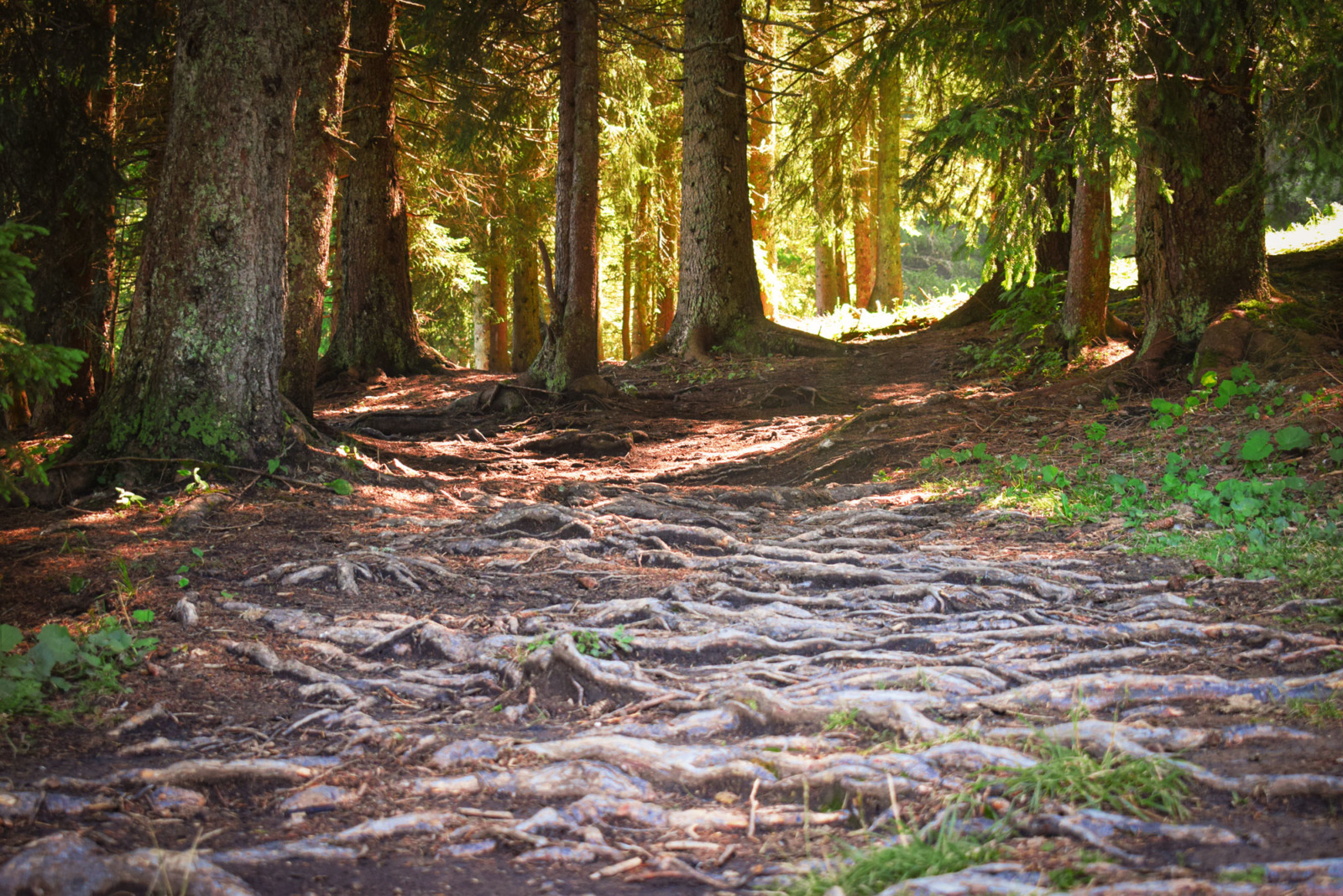
The life span of trees in France
The life span of trees in France varies according to the species:
- Maritime pine (pin maritime): 40/80 years
- Scots pine (pin sylvestre): 60/100 years
- Fir (sapin): 120/150 years
- Beech (hêtre): 120/150 years
- Spruce (épicéa): 150/180 years
- Oak (chêne): 150/225 years
To find out the age of a felled tree, all you have to do is count the number of circles (called rings) that you can see on a cross-section of the trunk: a ring is formed every year.
A forest for every climate in France
In France, the forest adapts to the climate:
- The Atlantic forest is a deciduous forest (oak, birch, beech, etc.).
- The Mediterranean forest includes evergreen trees (holm oak, cork oak) and conifers (pine).
- The mountain forest comprises conifers (firs, spruces, larches, etc.)
French forests close to big cities
Some large cities in France have a large forest on their doorstep. These forests allow city dwellers to come and visit the forest to get a breath of fresh air.
- Paris – The French capital is surrounded by several forests: Rambouillet, Saint-Germain, Montmorency, Meudon, Fontainebleau, Chantilly…
- Reims – La Montagne de Reims
- Nancy – La Forêt de Haye
- Mulhouse – La Forêt de la Hardt
- Besançon – La Forêt de Chaux
- Annecy – La Forêt du Semnoz
- Orléans – La Forêt d’Orléans
- Bordeaux – La Forêt des Landes
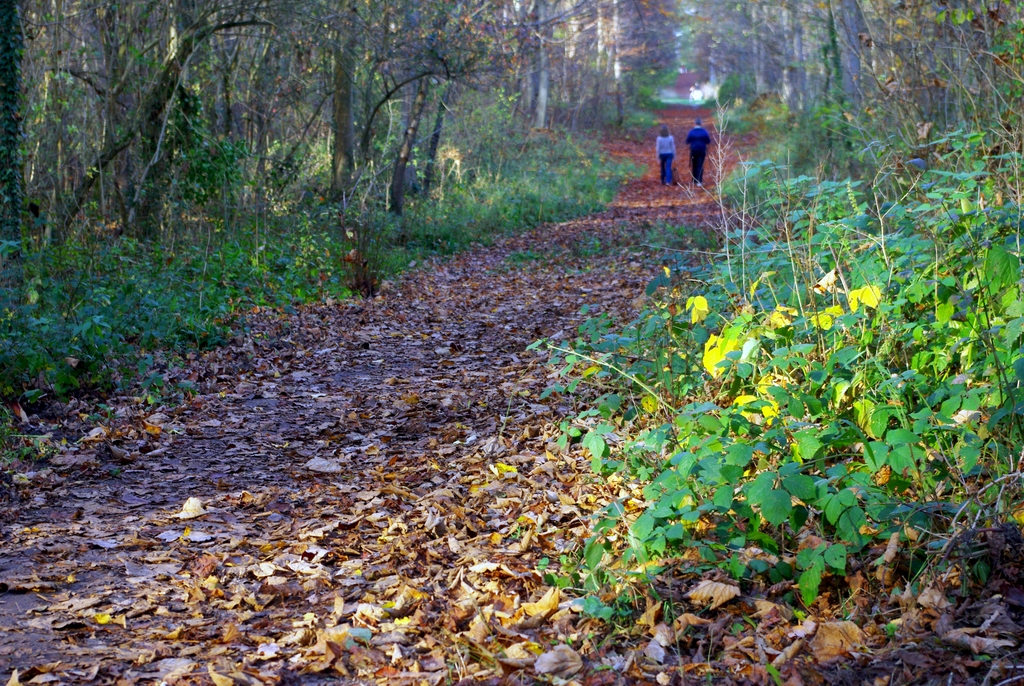
The 5 roles that the French forest plays
- It is vital for the balance of the natural environment.
- It protects the soil from erosion. The roots of the trees hold the earth, fix the sand, and prevent the soil from becoming bare due to the action of the rain and the wind. Bare, gullied soil is no longer fertile.
- It cleans the air by the quantity of oxygen they release; by renewing the atmosphere, trees are the best protectors of our health.
- It acts on the climate. Trees draw a large quantity of water from the soil and release it into the atmosphere in water vapour, which contributes to the formation of clouds.
- It is home to a whole world of animals: mammals (rabbits, foxes, field mice, deer, wild boars…), birds (robins, warblers, owls…) and countless insects.
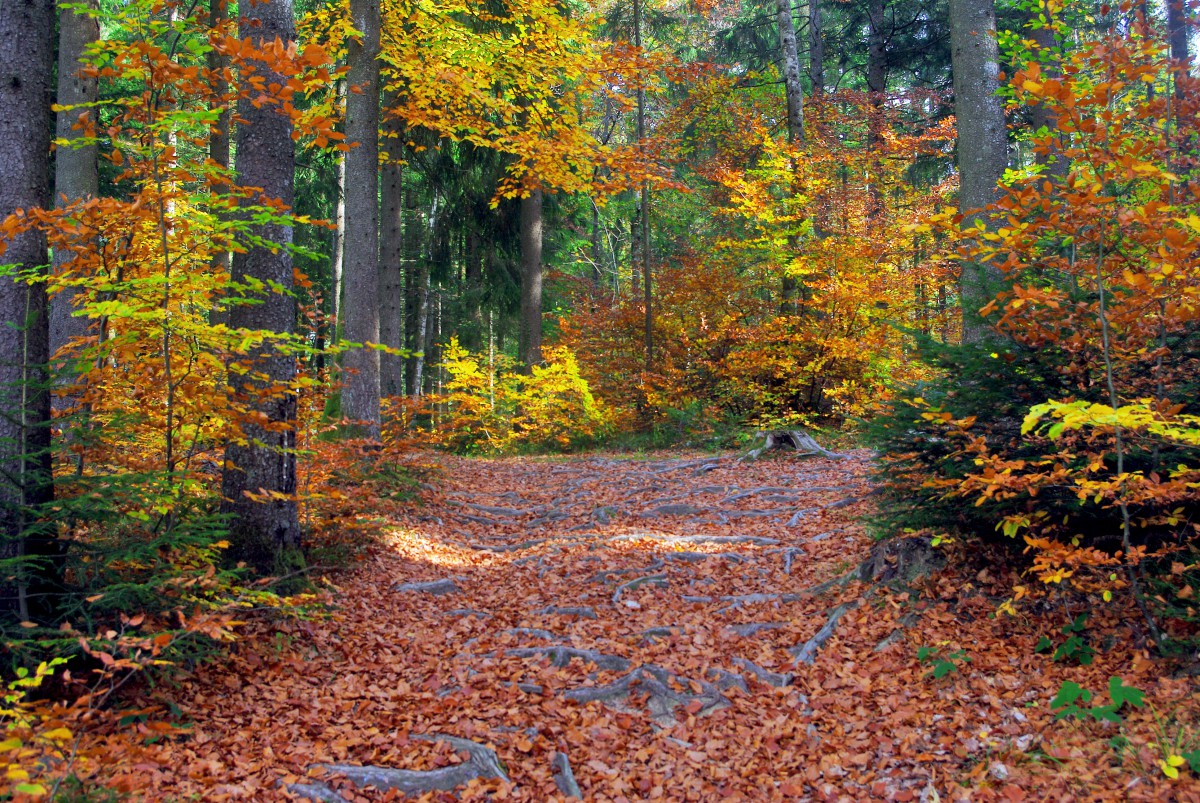
The forest in France is an asset to protect
It is estimated that each year the French forest absorbs 50 million tonnes of CO2.
The forest is a source of exploitation because it is a source of income. Wood is one of the main riches of humanity. It is a raw material that can transform in many ways (carpentry, furniture, fuel, paper pulp…).
But it is not an inexhaustible resource: its protection is essential.
The French forest in figures
Every year, 80 million trees are planted in France, that is 2.5 trees per second!
Facts and figures for metropolitan France
The French forest represents :
- 13% of the European Union’s wooded area.
- 17 million hectares in metropolitan France (31% of the territory).
- Three-quarters of the French forest is privately owned. 10% is state-owned. The rest is owned by local authorities, mainly communes but also departments and regions.
- 168,000 km2 or 31% of the territory, which is close to the world rate and is increasing.
- 7.7 million hectares of tropical forests in the four overseas departments. 98% are in French Guiana alone.

The forests in all France
In total, metropolitan France and its overseas departments and territories have 255,640 km2 of forests, i.e. 38.10% of the country’s total surface area (approximately 672,000 km2).
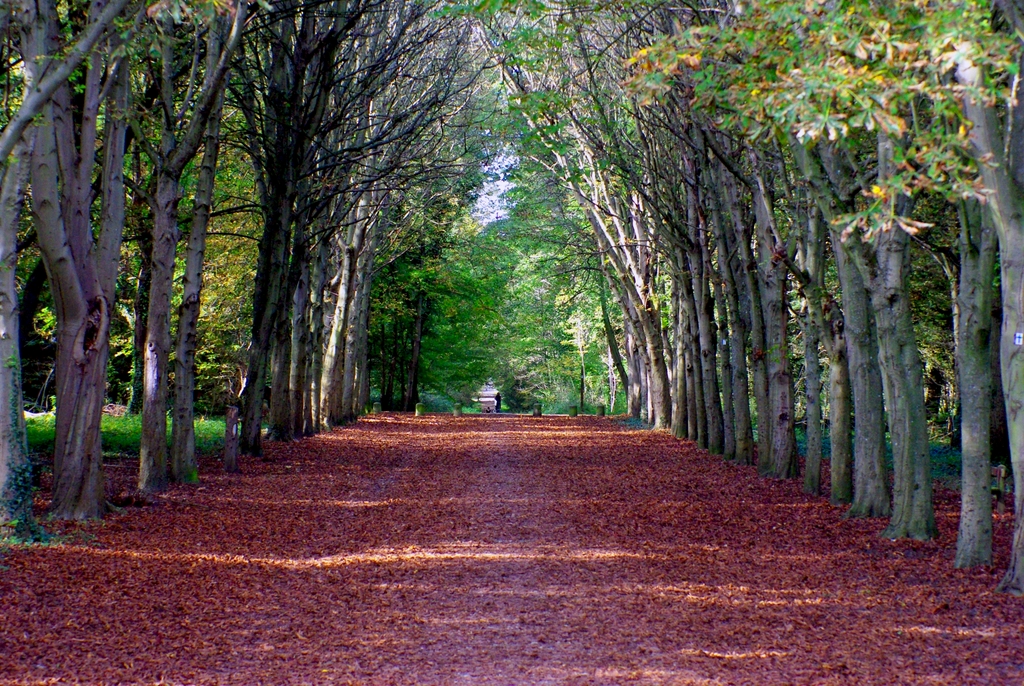
The most wooded regions of France
The three most wooded departments in mainland France:
- 65% Landes
- 63% Var
- 53% Vosges
![Map of France by rate of forest area © Francescab - licence [CC BY-SA 3.0] from Wikimedia Commons](https://frenchmoments.eu/wp-content/uploads/2022/01/Map-of-France-by-rate-of-forest-area-©-Francescab-licence-CC-BY-SA-3.0-from-Wikimedia-Commons.jpg)
The forest of France in Europe
The French forest represents 10% of the European wooded area (4th place, behind Sweden, Finland and Spain).
It is the largest deciduous forest in Europe and represents the third-largest stock of wood on the continent (excluding Russia).
Tree species in France
Metropolitan France includes 138 tree species.
This number reaches 5,213 species when combining metropolitan France with its overseas departments and territories.
In metropolitan France, deciduous trees account for 64% and conifers for 36% of the standing volume.
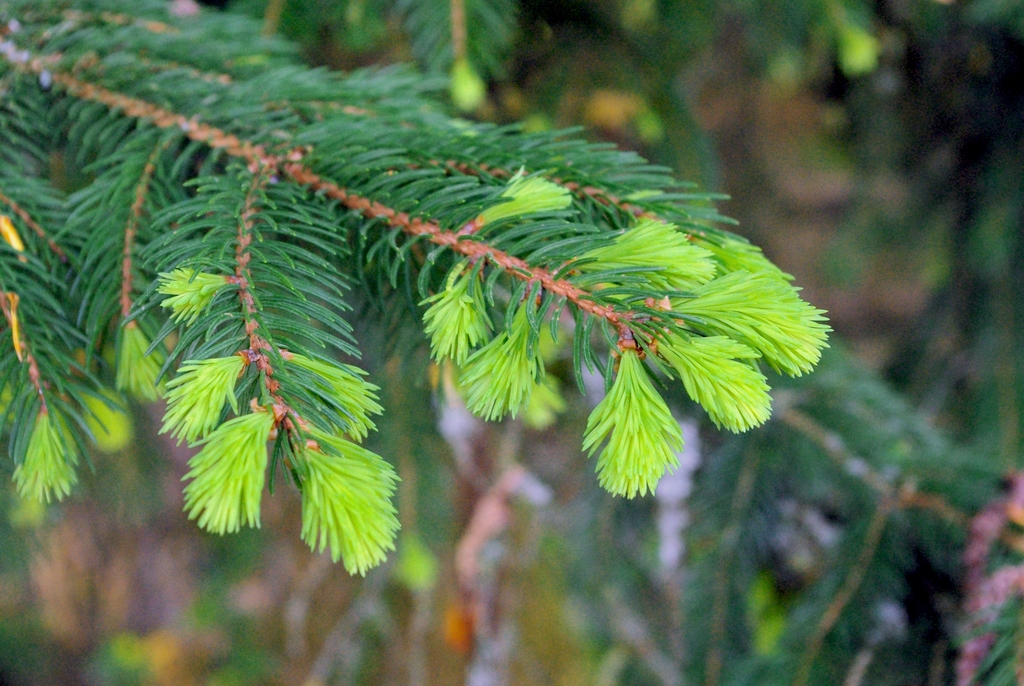
Excluding overseas territories, the volume is divided between:
- oak (chêne): 27%
- beech (hêtre): 11%
- spruce (épicéa): 8%
- fir tree (sapin): 8%
- scots pine (pin sylvestre): 6%
- maritime pine (pin maritime): 5%
- chestnut (châtaignier): 5%
- other conifers: 5%
- ash (frêne): 4%
- hornbeam (charme): 4%
- Douglas fir (pin douglas): 4%
The forestry industry in France
Wood processing companies employ 300,000 people.
The forestry and wood industry employs over 450,000 people if we add the craftsmen and construction companies.
France is the leading European producer of oak, beech and poplar.

Enjoy the forest in France!
A forest is a privileged place for leisure, relaxation, tourism and the discovery of fauna, flora and landscapes. The forest is :
- 8,000 km of cycle paths
- 11,000 km of hiking trails
- 500 km of cross-country ski trails
- 9,000 km of bridle paths
- 700 public areas

The largest forests of France
Here are some of the most extensive forests in France. You will find in the list below 20 forests in mainland France. However, let’s start with the largest forest outside mainland France, in South America. It is so unmissable that I couldn’t ignore it.
The Guyanese forest
(7.5 million hectares)
![Forest in France - French Guiana tropical forest © Cayambe - licence [CC BY-SA 3.0] from Wikimedia Commons](https://frenchmoments.eu/wp-content/uploads/2022/01/French-Guiana-tropical-forest-©-Cayambe-licence-CC-BY-SA-3.0-from-Wikimedia-Commons-1.jpg)
This tropical rainforest belongs to the Amazonian forest area. It covers 96 per cent of French Guiana’s territory and is the largest forest in the European Union.
The Landes forest
(1 million hectares)
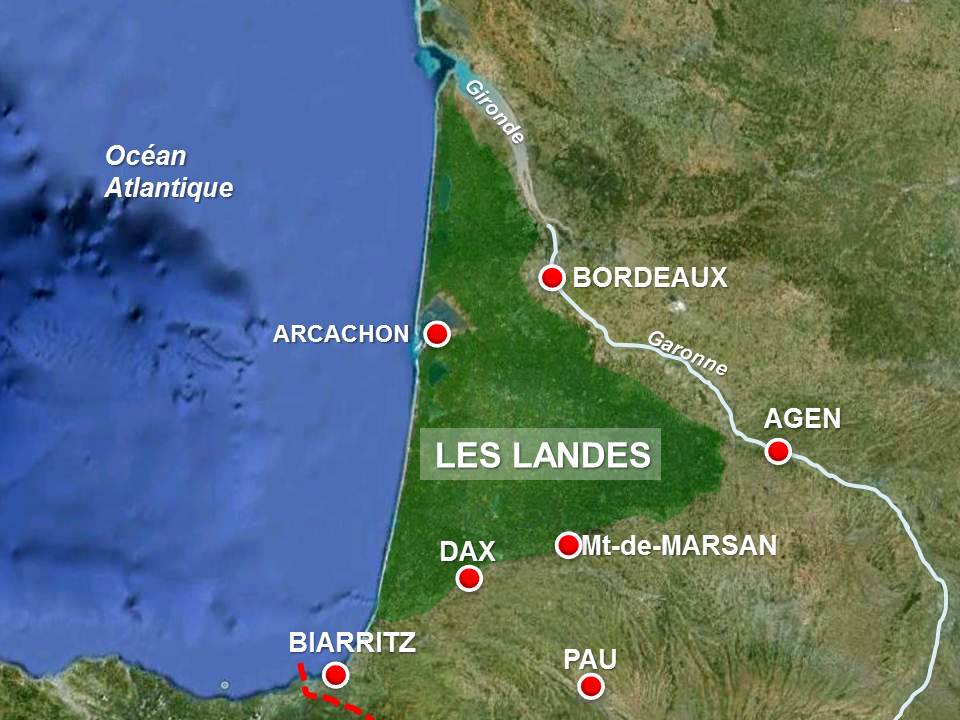
Located between Bordeaux and Bayonne, this forest mainly comprises maritime pines. Napoleon III created Europe’s largest artificial forest to drain the marshes.
The Vercors forest
(125,000 hectares)
![Forest in France - Vercors Forest © Berrucomons - licence [CC BY-SA 3.0] from Wikimedia Commons](https://frenchmoments.eu/wp-content/uploads/2022/01/Combe-Laval-Massif-du-Vercors-©-Berrucomons-licence-CC-BY-SA-3.0-from-Wikimedia-Commons.jpg)
This vast forest spans over two departments (Isère and Drôme) and is essentially made up of coniferous trees.
The Mont Ventoux forest
(80,000 hectares)

This forest contains rich biodiversity due to the Mediterranean and mountain influences of the region.
The Orléans forest
(50,000 hectares)
![Forest in France - Forest of Orleans © Unknown Author - licence [CC BY-SA 3.0] from Wikimedia Commons](https://frenchmoments.eu/wp-content/uploads/2022/01/Forest-of-Orleans-©-Unknown-Author-licence-CC-BY-SA-3.0-from-Wikimedia-Commons-scaled.jpg)
Located north and east of Orléans, the Orléans Forest is partially public (about 70% of its surface). It is also the largest state-owned forest in mainland France.
Grande Chartreuse State Forest
(42,500 hectares)
![Forest in France - Massif de la Chartreuse © Frédérique Voisin-Demery - licence [CC BY 2.0] from Wikimedia Commons](https://frenchmoments.eu/wp-content/uploads/2022/01/Massif-de-la-Chartreuse-©-Frédérique-Voisin-Demery-licence-CC-BY-2.0-from-Wikimedia-Commons.jpg)
This is the largest public forest in the French Alps. It belonged to the Chartreux order before the State confiscated it during the French Revolution.
The forest of Fontainebleau
(25,000 hectares)
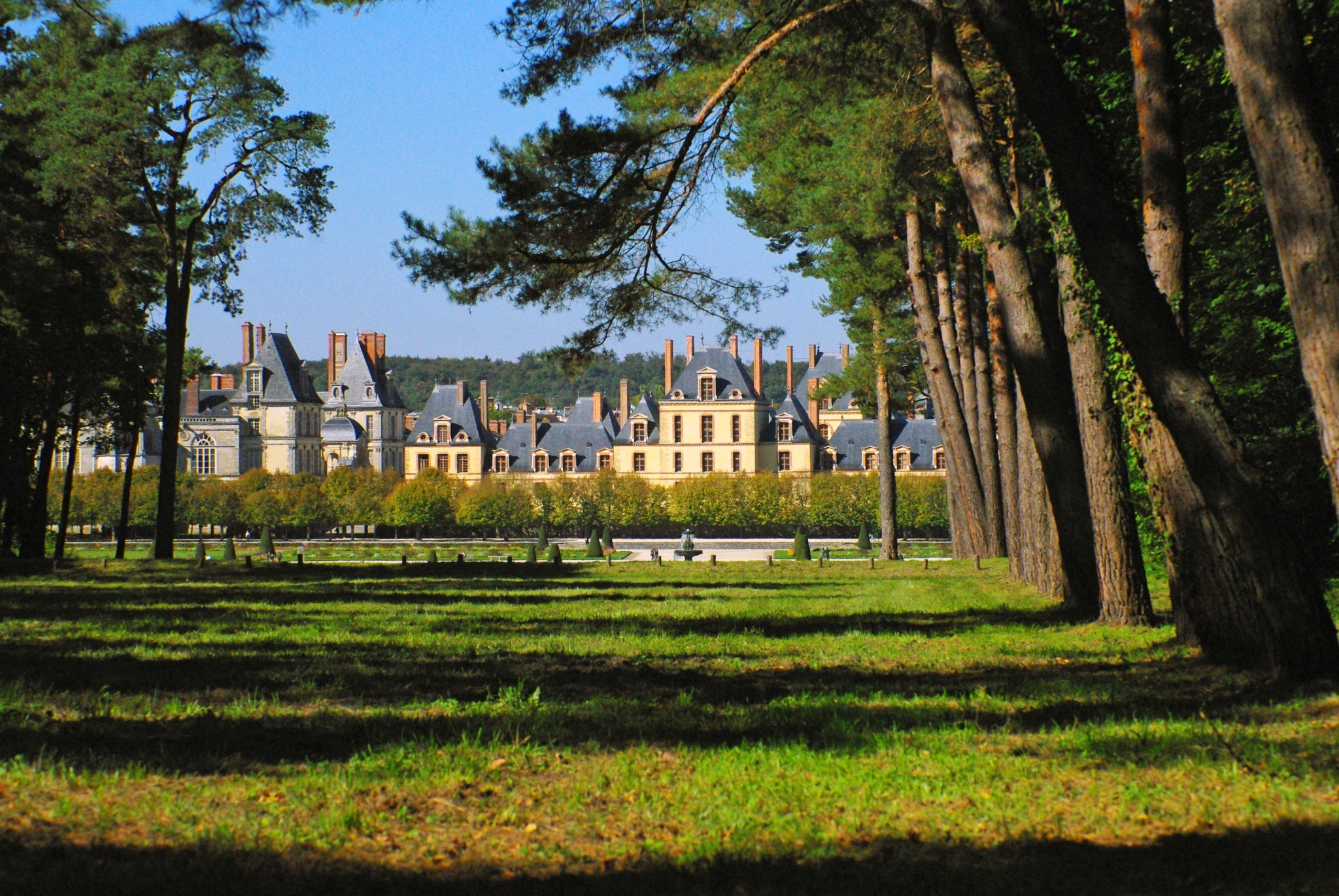
Very popular with the inhabitants of the Paris region, this forest borders the famous Château de Fontainebleau. It is mainly made up of oak and beech trees and contains many natural boulders used for climbing.
The Rambouillet forest
(22,000 hectares)
![Forest in France - Rambouillet Forest © Pline - licence [CC BY-SA 3.0] from Wikimedia Commons](https://frenchmoments.eu/wp-content/uploads/2022/01/Rambouillet-Forest-©-Pline-licence-CC-BY-SA-3.0-from-Wikimedia-Commons.jpg)
This forest in the Ile de France is located around the historic town of Rambouillet.
The Chaux forest
(20,500 hectares)
This forest in the Jura between Dôle and Besançon is one of the most extensive French forests in one piece.
The forest of the Montagne de Reims
(20,000 hectares)
It covers the hills of the Reims mountain south of Reims.
The Iraty forest
(17,200 hectares)
This vast forest in the Basque Country, straddling France and Spain, is the largest beech forest in France.
The Aigoual forest
(16,000 hectares)
It is a state-owned forest located at a high altitude in the southern part of Massif Central, between the Gard and the Hérault. It is home to many resinous species.
The Arc-en-Barrois forest
(15,200 hectares)
The forest extends around Arc-en-Barrois (Haute-Marne). It is considered one of the largest hunting areas for big game in France (wild boar, deer and roe deer).
The Darney forest
(15,000 hectares)
It is mainly located in the southwest of the Vosges department in Lorraine.
The forest of Compiègne
(14,300 hectares)
![Forest in France - Compiègne Forest © P.poschadel - licence [CC BY-SA 3.0] from Wikimedia Commons](https://frenchmoments.eu/wp-content/uploads/2013/11/Compiègne-Forest-©-P.poschadel-licence-CC-BY-SA-3.0-from-Wikimedia-Commons-1-1.jpg)
This forest owes its creation to the kings of France over a thousand years ago. It is an important French forest where significant events in French history took place: the capture of Joan of Arc and the signing of the Armistice of 1918.
The Haguenau forest
(13,400 hectares)
The largest forest in Alsace is located north of the town of Haguenau.
The Retz forest
(13,300 hectares)
The state forest of the Aisne is crescent-shaped around Villers-Cotterêts. It is situated 80 km northeast of Paris.
The Cîteaux forest
(13,200 hectares)
This forest complex is located in the French department of Côte-d’Or in Burgundy and was under the control of the Cîteaux abbey until the Revolution.
The Hardt forest
(13,000 hectares)
This forest is on the Alsace plain, between Mulhouse and the Rhine.
The Forêt de Haye
(11,000 hectares)
This vast forest massif is located on a plateau running from Toul to Nancy and is bounded to the west by the loop of the Moselle.
The Othe forest
(10,900 hectares)
This very hilly forest is located between the Champagne region to the north and Burgundy to the south and bounded by the Seine and Yonne valleys.
Vocabulary about the French forest
Here are some words in French to describe the theme of the forest.
- un massif forestier (a forest massif) is synonymous with a forest
- une forêt (a forest) is a relatively large area of woodland
- un bois (a wood) is a small forest
- un bosquet (a grove) is a small wood
- the adjective for ‘forêt’ is ‘forestier‘ (m) or ‘forestière‘ (f)
- the adjective for ‘bois’ is ‘boisé‘ (m) or ‘boisée‘ (f)
- une futaie = a high forest
- un taillis = a coppice
- un arbre = a tree
- une clairière = a clearing
- un buisson = a bush
- une lisière de forêt = a forest edge
- une orée du bois = an edge of the wood
- un feuillu = a broadleaf tree
- un conifère = a conifer / un résineux = a coniferous tree
- la déforestation = the deforestation
- le déboisement = the deforestation (applied to a wood)
- l’afforestation = the afforestation
- la reforestation = the reforestation
- le bûcheron = the woodcutter
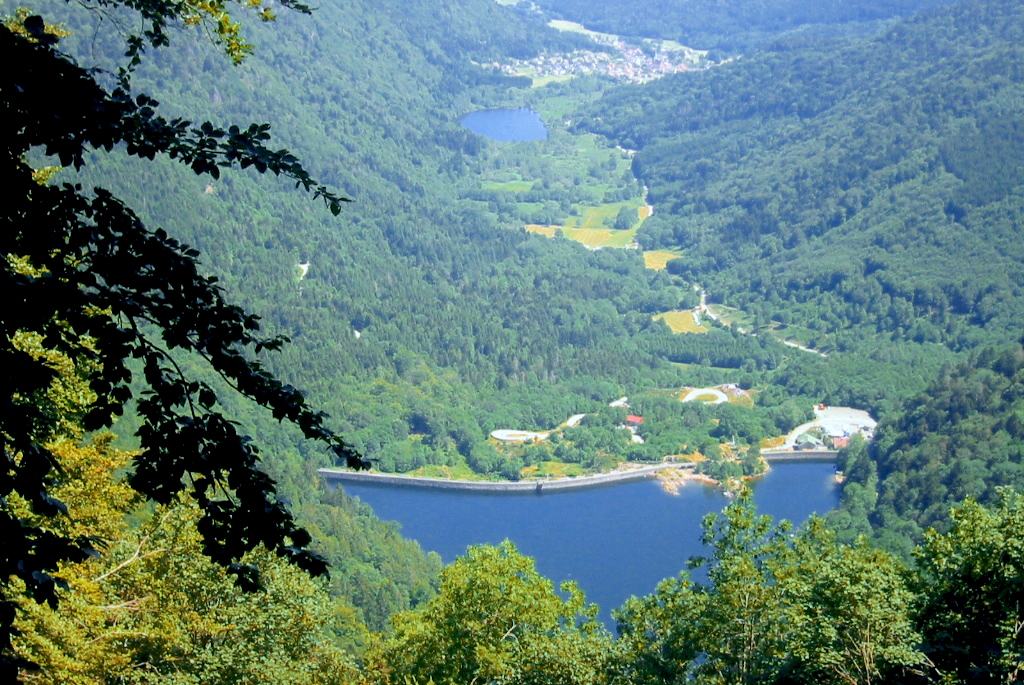
Find out more about the forest in France
- The countryside of France on the blog
- The forest of Saint-Germain-en-Laye on the blog
- The article in French on Wikipedia on the Forest in France
Pin in on Pinterest!
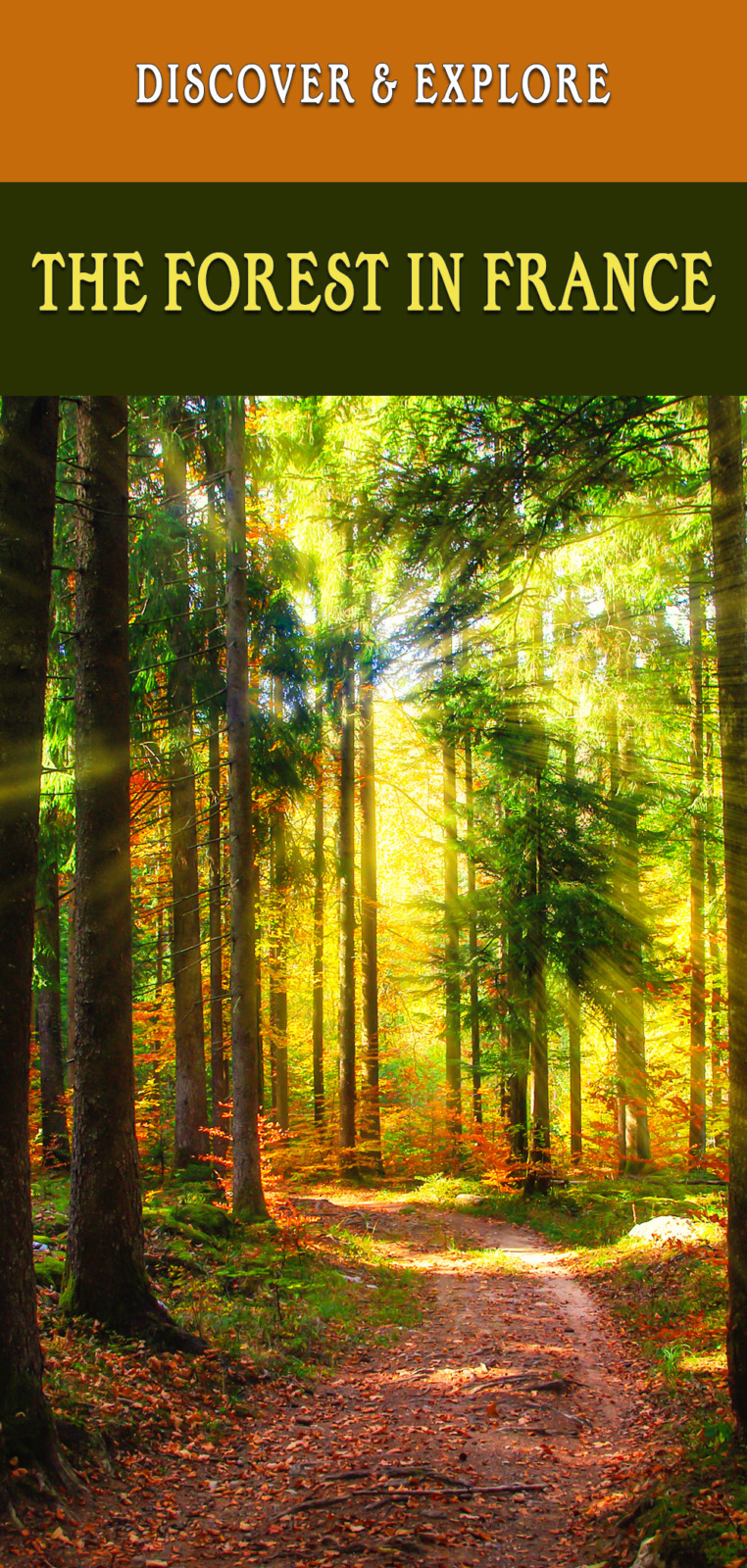





Oh my! I see France in a different light, when reading how massive and gargantuan are the forests in France.
Yes, they are amazing! 🙂
Hi Pierre,
Thanks for your article !
I have a question about "With 138 tree species, the French forest in mainland France contains almost 75% of the species found in Europe."
I would like to know more about this numbers … would it be possible for you to provide your source ?
Best regards
Christophe
Hello Christophe, thank you for your comment. Here are some of the sources where you can get more info from:
– https://www.onf.fr/onf/forets-et-espaces-naturels/+/20::les-forets-de-nos-territoires.html
– https://www.pefc-france.org/tout-savoir-sur-les-forets/
Hope this helps!